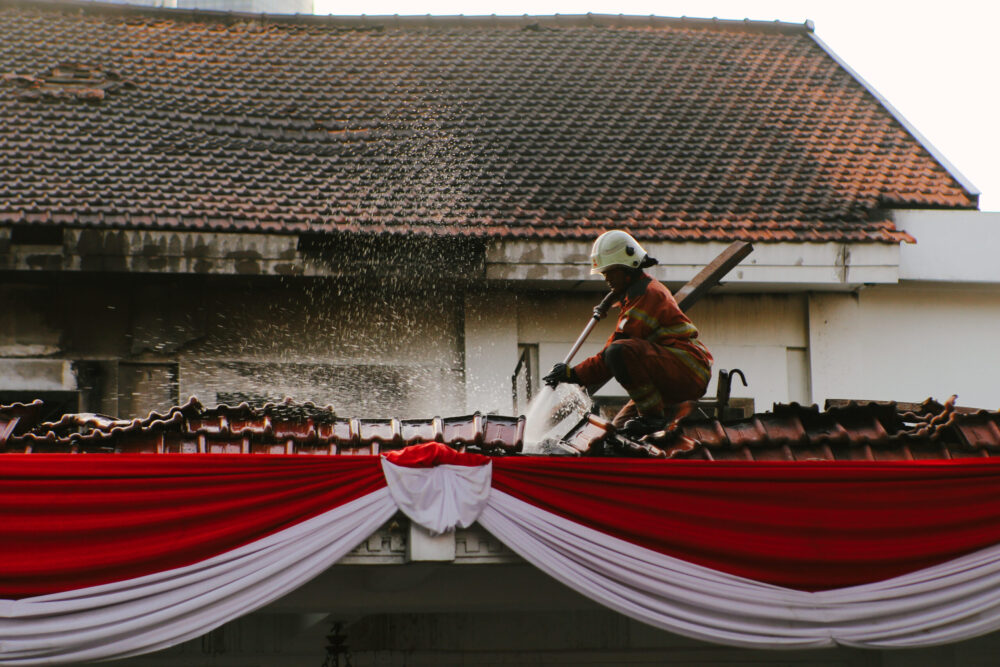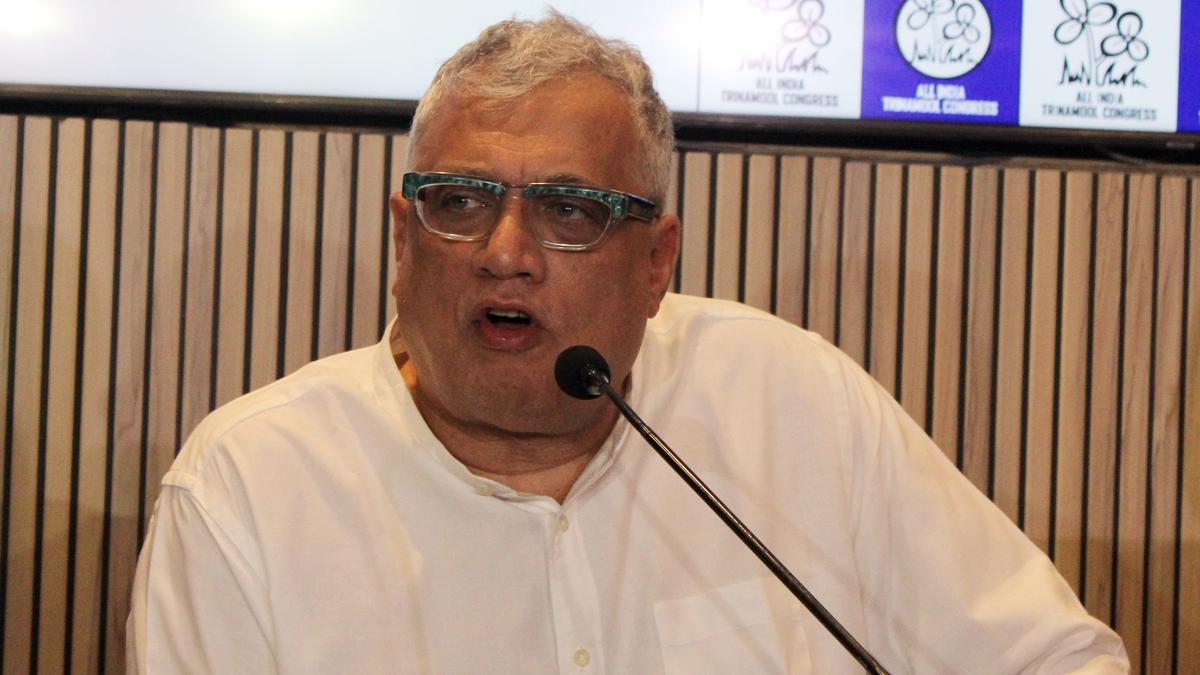By Edward Aspinall,Noandha Dhegaska
Copyright newmandala

A spectre haunts Indonesia’s tangible heritage: the spectre of raging flames. Across the decades, Dutch colonial-era buildings have been engulfed in fire—sometimes by accident, sometimes through neglect, and sometimes even through deliberate arson. Historically, setting fire to colonial structures could be a mode of resistance, a way of violently reclaiming spaces from the colonising power or preventing them from utilising them. Flames could purify and cleanse, severing visible ties to domination.
Yet in contemporary Indonesia, many of these sites have been reabsorbed into the rhythms of civic life, repurposed as government offices, museums, or community landmarks and leisure points, as I explored recently at New Mandala. Their survival and transformation reflect a shift: from being symbols of foreign domination to becoming shared arenas of collective identity. However, when these repurposed sites are reduced to ashes, as happened in the recent burning of the Grahadi (the Governor’s residence complex) and the Tegalsari Police Office in Surabaya amid nationwide anti-government protests on 30–31 August 2025, the significance these sites hold in the collective memory of the public needs to be taken into reflection.
In recent years, Indonesia has witnessed a troubling series of fires that have struck its cultural landmarks and heritage buildings. In 2023, the National Museum in Jakarta suffered a devastating blaze that destroyed priceless collections. In 2024, the old post office in Jakarta, repurposed into a popular social hub, was also badly damaged by fire. By August 2025, another blaze erupted in a heritage shophouse in Semarang, consuming structures that currently serve as a part of community life.
The protests that erupted in Indonesian cities in late August 2025 provide a stage to contemplate on the value of these structures for the community. The demonstrations began in Jakarta after parliament approved extravagant housing allowances for legislators, a decision widely seen as obscene in a period of economic hardship. What might have remained a familiar story of elite excess transformed into a nationwide movement when motorcycle rideshare driver Affan Kurniawan was killed by a police brigade vehicle near the parliament complex. His death became a flashpoint, transmuting anger over privilege into rage at systemic violence.
The protests spread to Surabaya, Makassar, Medan, and Yogyakarta. As in many uprisings, state buildings and symbols of authority became the primary targets. In Surabaya, colonial-era and governmental structures bore the brunt of the fury. But this is not about the hands that strike the match—this is about how the fire threatens the collective memories of struggle and resistance.
Among these, the destruction of the Grahadi Building was especially symbolic. Built in 1795 as the residence of Lieutenant-Governor Dirk van Hogendorp, it was reoriented under Governor-General Herman Willem Daendels into a neoclassical statehouse and eventually transformed into the official residence of East Java’s provincial governors after independence. Grahadi has lived many lives. It bore witness to various changing scenes of Indonesian history: Dutch colonial rule, Japanese occupation, the independence, the national revolution, and even other uprisings that followed after. Its continuity turned it into a vessel of collective memory to which it is an emblem not only of authority, but of endurance and transformation. It was eventually declared a heritage building in 2007.
To see it partially engulfed in flames in 2025 was to witness a paradox: in a space that once shifted from colonial domination into postcolonial civic life, history reenacts itself. But perhaps, in an altered course and meaning. Heritage here is never static but volatile, caught in between preservation, reappropriation, and destruction.
Icon, arson, reclamation
At first glance, such acts of arson might be interpreted as iconoclasm. Burning down heritage buildings can be read as an attack on symbols of belief, or even state and power, akin to toppling statues or defacing reliefs. Yet the comparison falters on a crucial point: unlike monuments or statues, these buildings had been recontextualised and reintegrated into Indonesian civic life. They were no longer serving as inert relics of colonial glorification but by multiple generations of Indonesians. To destroy them was not simply to resist acknowledging the collective struggles of the past in repurposing the heritage building, but to unravel its fragility in the memory of the present. In this sense, the fires of 2025 constituted less a reclamation than a rupture: an act of deliberate forgetting, where a certain interest overrode the tenuous continuity of historical meaning.
Facing this, Homi K. Bhabha’s concept of the Third Space becomes useful. For Bhabha, the cultural identity of the colonised is never settled; it emerges in negotiation, a constant process of interpretation and ambivalence. In the Third Space, there is a collapse of the colonial binaries of the Self/Other or the Coloniser/Colonised, giving rise to hybridity. The colonial identity of the “in-between” self, where a community desires but resists the coloniser’s position, is eventually settled through mimicry and distortion. Here, hybridity turns the coloniser’s own words and symbols into sites of resistance and reclamation.
In Indonesia, colonial buildings like Grahadi exemplify this process. They were inherited as symbols of colonial domination, but through inhabitation and repurposing, they were re-signified: from the residence of Dutch officials to the home of Indonesian governors, from a symbol of oppression to a hybrid site of postcolonial civic identity.
Yet the fire interrupts this hybridity. It halts the ongoing negotiation of meanings, the interpretation that allowed these buildings to embody a postcolonial present while carrying the weight of a colonial past. In this sense, the arson of Grahadi and other sites risks the erasure of the fragile Third Space where Indonesians had, for generations, re-signified colonial remains into something simultaneously inherited and their own. What was destroyed was not merely brick, stone, and timber, but the possibility of hybridity and decolonisation itself.
In regards to this, Ash Amin reminds us that infrastructure is not just material but symbolic and affective. Buildings, roads, and utilities embody collective sentiments of progress, belonging, or endurance. They function as mnemonic devices, reminders of past struggles or the improvisations that made settlements habitable. Informal urbanisation, through shared practices of adaptation, can transform bare material into collective infrastructure, knitting social identity into the built environment. Grahadi and other similar buildings, in this sense, were not just a colonial relic but a mnemonic infrastructure: it anchored Surabaya’s urban memory across generations. To lose it to flames threatens the mnemonic continuity. Even if rebuilt, the material rupture fractures the organic chain of remembrance.
The fires of 2025 also echo Indonesia’s own history of revolutionary arson. Bandung Lautan Api in 1946 and Malang Bumi Hangus in 1947 saw entire cities deliberately burned to prevent their reuse by Dutch and Allied forces. Fire here was a weapon, an assertion of agency over urban space. Yet the context matters: those acts of arson were strategic refusals to allow colonial reoccupation. The 2025 burnings, by contrast, were directed not at foreign occupiers but at reappropriated sites of collective identity. What once symbolised the reclamation of space now risks becoming the erasure of memory. Revolution and destruction, as history shows, stand on a thin scalding line.
This returns us to hybridity. The repurposing of colonial sites in Indonesia shows that revitalisation is not about glorifying colonial histories, but about reclaiming and reinterpreting the spaces. The Grahadi and other sites of similar histories embodied this hybridity: once instruments of domination, they became stages for Indonesian governance and urban life. Both resistance fighters and everyday residents have, at different times, inhabited these spaces and inscribed their own meanings upon them. They illustrate how colonial residue can be reworked into new forms of belonging and identity. To lose them is to lose not just buildings, but sites of hybridity where past and present, domination and resistance, continuously intermingled.
Ultimately, the fires of 2025 scorch us through these rising questions: Can heritage survive when the very infrastructures that anchor memory become targets of provocation? What does it mean when acts of resistance collapse into acts of forgetting? Fire, once a weapon of anti-colonial reclamation, now risks becoming a force of historical erasure. If hybridity is seen in the art of reworking colonial residues into living futures, then its interruption by flames exposes the precarity of postcolonial memory itself. The ashes of these sites remind us that heritage is never guaranteed; its tangible and intangible aspects must be continuously re-signified and preserved through proper measures and even communal engagement.
Blessing in blaze
History has a way of repeating itself, yet within destruction there often emerges a glimmer of renewal. After the fire at the National Museum, the charred remains of its galleries became, for a time, an exhibit in their own right; fragments that testified to both loss and resilience before restoration began. In a similar way, fire can carry a paradoxical grace: it draws public attention, sparks collective memory, and awakens a sense of urgency. The recent blaze at Grahadi and its surroundings stirred exactly this. Residents of Surabaya mourned the loss while also voicing how deeply the building mattered to their lives and identities. Only two days after the arson, Grahadi transformed into an impromptu gathering place. People flocked to its gates to take photographs, narrate personal memories, and weave new meanings around its scorched façade. Street vendors, too, seized the moment; not just selling snacks but sharing stories of what they had seen, turning commerce into oral testimony.
In this unexpected convergence, the space opened itself to organic storytelling. Revitalisation, after all, is not sustained by archives alone but by the voices of those who live alongside heritage. Perhaps, then, the blaze carries within it a blessing. Perhaps it is a wake-up call to remember the past struggle: the possibility of re-inscribing Grahadi’s narrative as a space that has been repurposed through the people’s awareness, along with their concerns, emotions, and claims of belonging. Fire, destructive as it is, can also purify, cleanse, and make visible what has long been hidden. In the end, what emerges from the ashes depends on how we choose to see, and how we choose to tell the story.
Enjoyed this article? Subscribe to New Mandala



